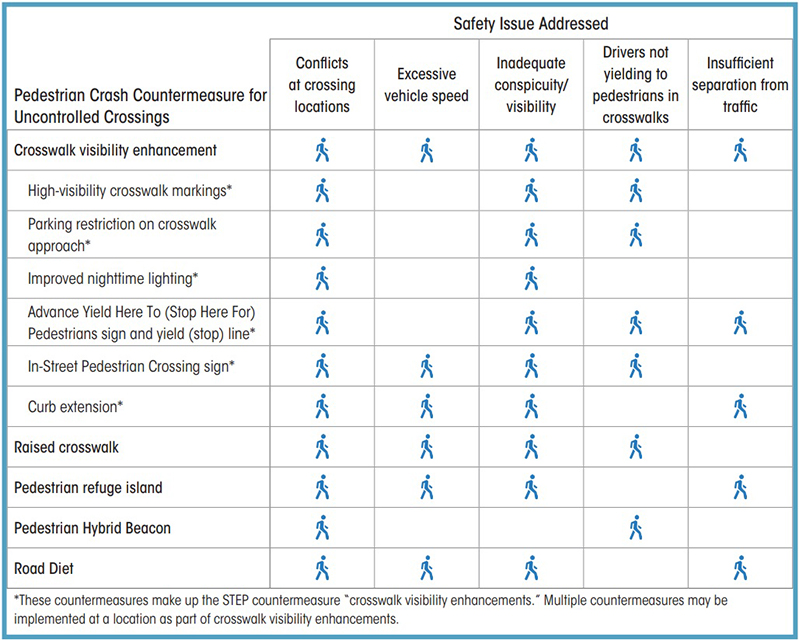Guide for Improving Pedestrian Safety at Uncontrolled Locations
by Airton Kohls (Source: AASHTO)
Pedestrians are among the most vulnerable road users, accounting for approximately 16 percent of all roadway fatalities nationally in 2016, per the Fatality Analysis Reporting System (FARS). In Tennessee, we had 97 pedestrian fatalities in 2016, a little more than 9% of the total traffic fatalities. Pedestrians are especially vulnerable at non-intersection locations, where 72 percent of pedestrian fatalities occur. Focused on addressing the issue, FHWA has just published the Guide for Improving Pedestrian Safety at Uncontrolled Locations. This document was produced as part of the Safe Transportation for Every Pedestrian (STEP) program. STEP is part of the fourth round of Every Day Counts. STEP’s purpose is to help transportation agencies address crashes by promoting countermeasures with known safety benefits at uncontrolled crossing locations. You can download a free copy of the document at: https://www.fhwa.dot.gov/innovation/everydaycounts/edc_4/guide_to_improve_uncontrolled_crossings.pdf
This guide addresses safety issues at uncontrolled pedestrian crossing locations, which occur where sidewalks or designated walkways intersect a roadway at a location where no traffic control (i.e., traffic signal or STOP sign) is present. These common crossing types occur at intersections (where they may be marked or unmarked) and at non-intersection or midblock locations (where they must be marked as crossings). Overall, uncontrolled pedestrian crossing locations correspond to higher pedestrian crash rates than controlled locations, often due to inadequate pedestrian crossing accommodations. By focusing on uncontrolled crossing locations, local and State agencies can address a significant national safety problem and improve quality of life for pedestrians of all ages and abilities.
The document is structured in 6 Chapters that include collecting data and engaging the public, inventory conditions and prioritizing locations, analyzing crash types and safety issues, selecting countermeasures, consulting design and installation resources, identifying opportunities and monitoring outcomes. It provides two reference tables to help identify countermeasure options. One identifies countermeasures by roadway conditions such as vehicle speed limit, annual average daily traffic (AADT), and number of travel lanes. The other (presented below) helps further pinpoint the most appropriate countermeasures by common safety concerns such as failure to yield or excessive vehicle speeds. The guide does not include specific recommendations for countermeasures based on all criteria in design and reference manuals, such as actual speeds and pedestrian volumes. The agency should reference the Manual on Uniform Traffic Control Devices (MUTCD), American Association of State Highway and Transportation Officials (AASHTO) design guidelines, and State and local practices when selecting one or more specific countermeasures.

Back-Contents-Forward